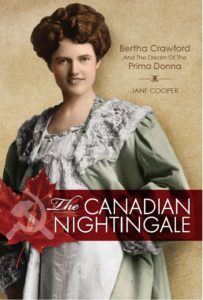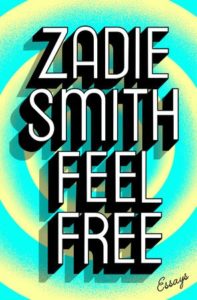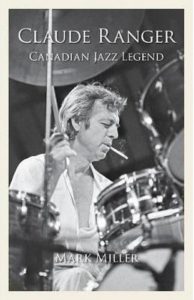New Orford String Quartet Tenth Anniversary Recital
Toronto Summer Music Festival 2019: Beyond Borders
New Orford String Quartet Tenth Anniversary Concert
Walter Hall, University of Toronto
Friday, July 12th, 2019 at 7:30 pm
Program:
Joseph Haydn String Quartet in D Major, Op. 20, no. 4
Christos Hatzis String Quartet No. 5 “The Transforming” (premiere)
Intermission
Ludwig van Beethoven String Quartet in C major, Op. 59, no. 3
encore: François Dompierre Par quatre chemins, IV “Pavane solitaire”
The New Orford String Quartet:
Jonathan Crow and Andrew Wan, violins
Eric Nowlin, viola
Brian Manker, cello
An enthusiastic sold-out audience greeted the New Orford String Quartet with cheers and a rousing standing ovation at the conclusion of its tenth anniversary recital program. Jonathan Crow noted that the program was modelled on the quartet’s first public recital at the Orford Arts Centre in July 2009, which featured Haydn Op. 20, no. 2, Ernest MacMillan’s String Quartet, and Beethoven Op. 132 [i.e. Haydn Op. 20 – Canadian work – Beethoven].
Conventional wisdom has it that only full-time string quartet ensembles can reach the highest professional standards in this demanding medium. If that is the case, then the NOSQ is the exception that proves the rule. Despite the fact that the members all have full-time orchestral positions, the NOSQ upholds the very highest standards of string quartet performance. Wan and Crow alternate on first violin; in this case, Wan played first in the Haydn and Beethoven, while Crow took that role for the Hatzis. Each member of the quartet is a full and equal participant in creating the group’s beautiful collective sound, which ranges from the most delicate of whispers (a dynamic level often featured in the Hatzis work) to a full-on thunderous fortissimo (e.g. the glorious C-major excitement in the outer movements of Op. 59, no. 3).
Haydn’s six Op. 20 string quartets are the first collection of great works in the medium. (Hans Keller in his stimulating book The Great Haydn Quartets includes only Op. 9, no. 4 of the composer’s earlier quartets in his discussion of Haydn’s 45 masterpieces in this medium.) The Op. 20 works are very different in idiom from the later Haydn quartets, which only goes to show how far the composer travelled in this medium. The NOSQ perhaps chose Op. 20, no. 4 for this occasion to fit in with the Toronto Summer Music Festival theme “Beyond Borders,” given the references in the work to the Romani violin idiom, as explicitly stated by the tempo designation of the third movement, Menuetto: Allegretto alla zingarese (“in gypsy style”). The work gives each player opportunities to shine: the first violin dominates in the first movement, the theme and variations second movement features solos for each player, the trio of the third movement is a solo for cello, and all four players exchange rapid-fire motives in the Presto scherzando finale. It was a terrific work to show off the exceptional performance skills of each member of the NOSQ.
The longest work on the program, and the most demanding for both the performers and the audience, was the new quartet by Christos Hatzis. In his pre-concert lecture, Hatzis noted that a commission to write for the NOSQ was an invitation to include all manner of virtuosic string quartet writing, secure in the knowledge that the players would be up to the task. But he noted as well that he eschews “complexity for the sake of complexity,” and feels strongly that the music must always be expressive and convey content persuasively and meaningfully. In the case of this quartet, there is an extra-musical inspiration revolving around the story of Christ’s Passion and Resurrection, completing what the composer calls a “psychological hermeneutic” begun in his String Quartet No. 4 “The Suffering” (which was premiered by the Penderecki String Quartet in 2018). Hatzis has provided a program note about the work on his website here, and a 23-page essay about it here.
Hermeneutics aside, the quartet is an engaging and varied work in three substantial movements. The NOSQ gave an entirely committed and persuasive reading of the quartet, which showcased the ensemble’s extraordinary musicianship and interpretive skills. Each movement featured varied expressive ideas, many of them extremely quiet in dynamics (and on numerous occasions, alas, all but obscured by audience coughs; good luck to the sound engineer who will be tasked with removing as much bothersome audience noise as possible from the broadcast recording of the work). The quartet incorporates a kind of late-Romantic tonality (at times bringing to mind the quartets of Janáček to this listener) and also a 24-note quarter-tone scale which was effectively employed by the composer and persuasively realized by the NOSQ. Hatzis managed to hold the audience’s attention continuously over the course of the 45-minute duration of the quartet, and both he and the performers received a warm ovation at the end.
The NOSQ have shown themselves to be outstanding performers of the Beethoven quartets on numerous occasions, and they certainly rose to the task of Op. 59 no. 3 beautifully for this tenth anniversary recital. The mysterious and still modern-sounding opening of the work, with its extraordinary meandering dissonances and hushed dynamics, was spellbinding, and the contrast with the ebullient Allegro vivace that follows was nothing short of stunning. Andrew Wan, whose superb recent recording of Beethoven’s Op. 30 violin sonatas has deservedly been getting frequent radio airplay, shone in the opening movement, which contains some of the most thrilling music in all of the Beethoven quartets.
Not even the NOSQ, unfortunately, could convince me of the merit of the middle two movements of the quartet, which for me mark the (rare) low-water mark in the Beethoven quartet repertoire. The second movement is plodding and dull, sounding like second-rate Mendelssohn avant la lettre, while the third movement aims for innocence but merely achieves mundanity. This is not to criticize the performance of those two movements by the NOSQ; they did what they could with the material. Beethoven was obviously saving his powers for the finale, a scintillating fugue that drives the players to the very limits of their abilities. Eric Nowlin got the movement going at a breathtaking pace, and as the others joined in one by one, the music built steadily in excitement. By the end, I am sure that the heart of pretty much everyone hearing the performance was racing as fast as the eighth notes in the music, and the audience leapt up as one to greet the quartet with cheers and sustained applause. The NOSQ obliged with an encore that contrasted completely with the fugal finale of Op. 59, no. 3: a languorous slow movement from a quartet by the Quebec composer François Dompierre, which the quartet has recorded on the Atma Classique label. The Dompierre brought the audience back to earth and restored heartbeats to a normal rate.
This was a recital to remember. If the rest of the Toronto Summer Music Festival lives up to these standards, audiences are in for a truly memorable few weeks of music making. Hats off to the Artistic Director, Jonathan Crow, for his vision, his leadership, and his incredible musicianship. To quote Honest Ed Mirvish, a talent like this comes along once in a lifetime, sometimes never! How lucky we are to have him in our midst here in Toronto.
 ISBN 978-1-5255-1740-2 (hardcover, $26.49) / 978-1-5255-1741-9 (paperback, $15.49) / 978-1-5255-1742-6 (eBook, $9.99). All prices are quoted from the
ISBN 978-1-5255-1740-2 (hardcover, $26.49) / 978-1-5255-1741-9 (paperback, $15.49) / 978-1-5255-1742-6 (eBook, $9.99). All prices are quoted from the  I have not read anything by Zadie Smith. Not White Teeth, not On Beauty, not even Swing Time. Those are all on my wish list, but I have such a backlog of great books on my wish list that I may not get around to Zadie Smith for quite a while. But when I noticed that her most recent book, an essay collection titled
I have not read anything by Zadie Smith. Not White Teeth, not On Beauty, not even Swing Time. Those are all on my wish list, but I have such a backlog of great books on my wish list that I may not get around to Zadie Smith for quite a while. But when I noticed that her most recent book, an essay collection titled  ISBN 978-1-77302-561-2 (hardcover, $34.04) / 978-1-77302-559-9 (paperback, $20.96) / 978-1-77302-560-5 (eBook, $6.99). All prices are quoted from the
ISBN 978-1-77302-561-2 (hardcover, $34.04) / 978-1-77302-559-9 (paperback, $20.96) / 978-1-77302-560-5 (eBook, $6.99). All prices are quoted from the